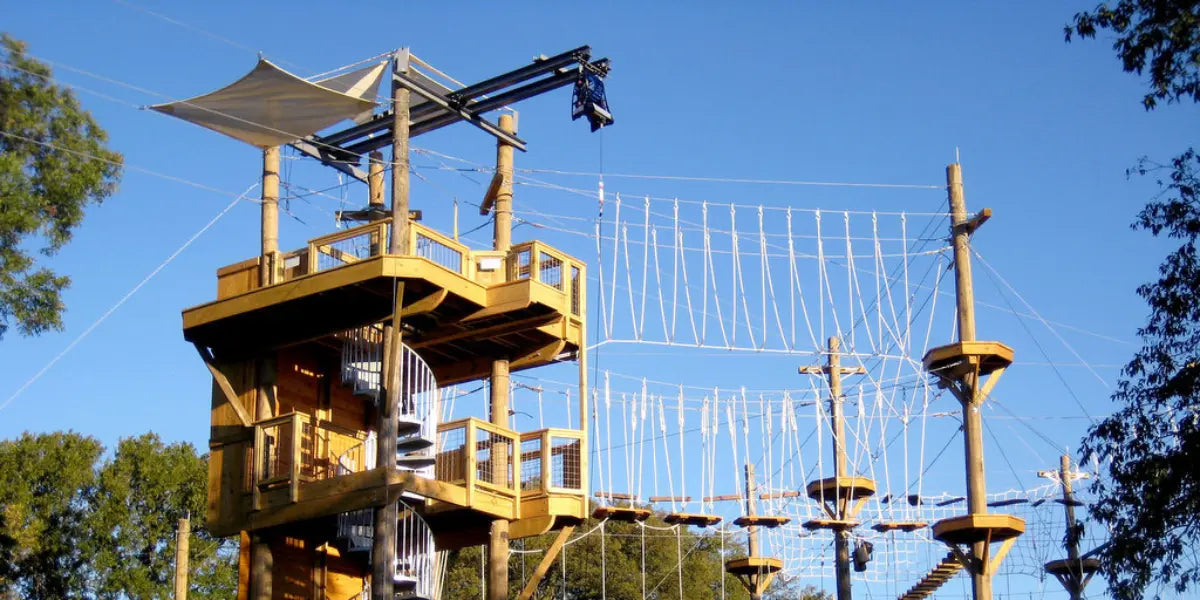The off-season is an opportune time for aerial adventure course operators to focus on the upkeep of their equipment. Gear inspection and maintenance are pivotal to the safety and longevity of equipment used in challenge courses. This blog post aims to provide insightful off-season gear tips for inspecting, maintaining, and retiring equipment.
The Importance of Regular Gear Inspections
Maintaining the safety of an aerial adventure course relies on thorough and routine checks of all the equipment used in the facility's operation. Diligent inspections can reveal early indications of damage or wear that could lead to unsafe conditions. A proactive inspection program tailored to your operation can be a key factor in avoiding these hazardous situations. It's crucial to equip staff with the skills to spot damage and excess wear and the resources to document their inspection activities. This helps you identify issues before they become serious and facilitates prompt equipment repair and replacement.

Essential Maintenance Strategies
The off-season is the perfect time to focus on gear maintenance, gear management and care. By taking simple steps each year, you can extend the lifespan of your equipment and avoid potential hazards. Here are the essential steps you should take for most types of challenge course gear:
- Cleaning: Proper gear cleaning is essential to address the buildup of dirt and grime throughout the season, which can accelerate wear. Usually, warm water and a small amount of mild detergent are all you need. Each type of gear may have specific cleaning requirements based on the materials it's made from, so it's always a good idea to check the manufacturer's recommendations. Never use harsh chemicals for cleaning, and dry equipment properly before storing.
- Lubricating: Proper lubrication can significantly impact the functionality and lifespan of challenge course gear, such as pulleys, carabiners, and zipline trolleys, by reducing friction between moving parts and protecting against rust and corrosion. It's essential to use lubricants that resist dust and debris, which can abrade and wear down equipment. Silicone-based lubricants and dry lubricants (such as PTFE, or Teflon-based sprays) are generally recommended for these applications. They provide a thin, non-sticky layer that protects metal parts from moisture and contaminants. Always follow the equipment manufacturer's guidelines closely, applying the recommended lubricates in the specified amounts to the indicated areas and wiping away any excess.
- Storage: Properly storing your equipment in a cool, dry, and ventilated environment is key to preserving its functionality and extending its lifespan. Exposure to moisture can result in mold and mildew, which weaken and compromise your gear. Similarly, extended exposure to sunlight can adversely affect materials such as nylon and polyester, causing them to become brittle and lose strength. Optimal storage conditions include areas shielded from direct sunlight that maintain a steady and moderate temperature and avoid heat and cold extremes. Ensure your storage space is devoid of chemicals, sharp objects, and other elements that could damage gear, and take proactive measures to ward off pest infestations and prevent moisture-related issues before they become significant problems.
Utilizing the off-season for essential maintenance like cleaning, lubricating, and properly storing challenge course gear can significantly extend its lifespan and help operators prevent avoidable hazards.

Managing Risk by Retiring Equipment
Even with the best maintenance practices, all gear has a finite service life. Recognizing when gear should be retired is critical to meeting manufacturer guidelines and upholding safety standards. Gear used in harsh environments, subjected to extreme weather, or regularly interacting with other components may require earlier retirement. Implementing a systematic process for documenting the use and condition of gear can aid in making informed decisions about retirement. This proactive approach to managing gear lifecycle aligns with industry best practices and reinforces a culture of safety among staff. The common criteria for retiring gear include:
- Manufacturer's guidelines on lifespan and usage limits
- Visible signs of wear, damage, or degradation
- A history of heavy loads or impacts that could compromise integrity
Retiring old or damaged gear is essential in risk management and significantly reduces the potential for an equipment-related incident.
Utilizing Downtime Effectively
The off-season downtime is a golden opportunity to conduct thorough inspections, perform maintenance, and plan for equipment retirement and replacement. You can become an expert gear manager who gets the most from their equipment investment by taking a few intentional steps.
- Schedule comprehensive inspection and maintenance sessions for the off-season.
- Train staff on manufacturer guidelines and identifying signs of wear and damage.
- Keep detailed records of inspections, maintenance, and gear retirement.
- Allocate resources for repairs and replacements as needed.
This systematic approach ensures that every piece of equipment is ready for the next season, offering participants a safe and enjoyable adventure experience.
Conclusion
The off-season is not just a break in operations but a crucial period for ensuring the safety and longevity of challenge course gear through regular inspections, diligent maintenance, and informed retirement practices. Let this off-season be a time of proactive improvement, setting a high standard for gear maintenance and inspection for your challenge course, zip line, or aerial park.

